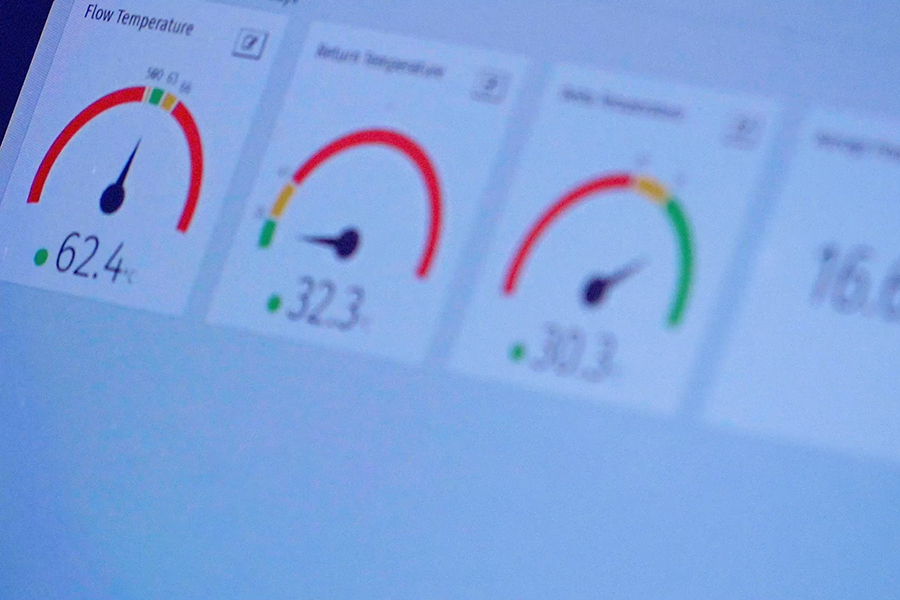The London Plan Policy SI 2 sets out the ‘be seen’ requirement for all major development proposals to monitor and report on their actual operational energy performance for at least five years. The ‘Be Seen’ energy monitoring guidance explains how to comply.
What is a ‘major development’?
Major developments are also known as ‘referable applications’ as these proposals need to be referred to the Mayor of London.
An application is referable to the Mayor if it meets the criteria set out in the Mayor of London Order (2008). The criteria covers a:
- development of 150 residential units or more
- development over 30 metres in height (outside the City of London)
- development on Green Belt or Metropolitan Open Land
Interpreting planning requirements
The following text has been taken from the planning requirements imposed on major developments in London and can be seen in practice already in planning documents from London Borough of Greenwich and London Borough of Barking and Dagenham, and in a letter from the Department for Levelling Up, Housing & Communities in relation to an application made to the London Borough of Brent.
Section A: Before building works begin
The development hereby approved shall be constructed to comply with the GLA ‘Be Seen’ energy monitoring requirements as set out below for a minimum period of five years from first occupation, for each phase:
(A) Prior to the commencement of above ground works within each phase of the development, excluding demolition and site clearance works, accurate and verified estimates of the ‘be seen’ energy performance indicators, as outlined in Chapter 3 ‘Planning stage’ of the GLA ‘Be seen’ energy monitoring guidance shall be submitted to the GLA’s monitoring portal and Local Planning Authority for information.
How Guru Systems can help
Guru Systems currently captures heat network performance data from over 250 heat networks in the UK, and over the past ten years we’ve worked with a wide range of local authorities, housing associations and private developers to monitor heat network performance in residential developments.
Our team can share anonymised data to help set realistic estimates for any ‘be seen’ energy performance indicators.
Section B: Upon completion of the ‘as-built’ design for each phase
(B) Upon completion of the ‘as-built’ design for each phase (upon commencement of RIBA Stage 6) and within 4 months of practical completion of each phase of residential development, updated accurate and verified estimates of the ‘be seen’ energy performance indicators for each reportable unit of the development, as well as supporting evidence, as per the methodology outlined in Chapter 4 ‘As-built stage’ of the GLA ‘Be seen’ energy monitoring guidance, shall be uploaded to the GLA’s monitoring portal and submitted to the Local Planning Authority for information. Confirmation that suitable monitoring devices have been installed and maintained for the monitoring of the in-use energy performance indicators, as outlined in Chapter 5 ‘In-use stage’ of the GLA ‘Be seen’ energy monitoring guidance document should also be provided.
How Guru Systems can help
Guru Verify is our mobile and web app for quicker, more cost effective acceptance testing.
Heat networks consultancy FairHeat describe Acceptance Testing as ‘rigorous testing to verify dwelling performance by ensuring the installation, commissioning and operation are as per the design and performance specification’.
Guru Verify supports compliance with Be Seen, as it ensures the building is performing to design, and allows you to hold your contractors to account if changes need to be made. This data captured at this point can then act as a baseline for future reporting periods to be compared to.
Part (B) also requires that “suitable monitoring devices have been installed.” All Guru Systems hardware (Guru Hub 2 and Guru Hub 3) captures the necessary data to comply with Be Seen.
Section C: Upon completion of each year of occupation for each phase
(C) Upon completion of the first year of occupation for each phase, following the end of the defects liability period (DLP) and for the following four years, accurate and verified annual in use energy performance data as well as supporting evidence for all relevant indicators under each reportable unit of the development as per the methodology outlined in Chapter 5 ‘In use stage’ of the GLA ‘Be seen’ energy monitoring guidance shall be uploaded to the GLA’s monitoring portal and submitted to the Local Planning Authority for information.
How Guru Systems can help
All data captured by Guru Systems hardware, including performance data, can be accessed via API, or exported, ready to upload to the GLA’s monitoring portal.
Section D: If ‘as-built’ performance estimates are not being met
(D) In the event that the in-use evidence submitted under part (C) shows that the as-built performance estimates have not been or are not being met for two consecutive years, the legal Owner shall investigate and identify the causes of underperformance and the potential mitigation measures and set these out in the relevant comment box of the ‘be seen’ spreadsheet within 3 months of identifying a shortfall against the as-built performance estimates. Where measures are identified, which can be reasonably practicable to implement, an action plan comprising such measures shall be prepared and submitted to the Local Planning Authority for written approval within 3 months of identifying a shortfall against the as-built performance estimates. The measures approved by the Local Planning Authority shall be implemented by the legal Owner based on the agreed action plan timescales, and in any event, no later than 6 months following approval of the action plan.
How Guru Systems can help
The simplest way to mitigate the risk of implementing expensive and disruptive action plans, is to ensure the heat network does not underperform.
Our heat network performance management platform Guru Pinpoint can be used to help ensure heat networks continue to perform as designed. Monitoring heat network performance is the easiest way to spot problems and inefficiencies when they first arise.
- Find out more: How Guru Pinpoint was used to identify inefficiencies on nine existing heat networks.
Even where networks are well-designed and properly commissioned before residents move in, unmonitored heat networks are often left to drift, with performance degrading over time.
This is often not due to a fault in equipment, but rather is due to the accumulation of many small changes in the system over time, for example maintenance engineers changing one part of a heat network without regard to the effect on the whole.
Guru Systems’ real-world monitoring of heat networks over a three year period, delivered in collaboration with the UK Government, showed that the cost of heat and carbon emissions can more than double on a heat network within three years if action is not taken.
One way to avoid this drift, is to ensure that HIU settings stay as they were when the network was first commissioned.
Guru Integrate SATK32 is our market-first collaboration with Altecnic to support remote configuration of Altecnic’s SATK32 electronic HIU. Remote configuration of HIU settings saves costs on expensive maintenance visits and means settings can be changed to minimise heat losses as soon as a problem is identified.
Best Practice
At Quayside, Totnes, The Guinness Partnership decided to use Guru Pinpoint to spot problems early and ensure the network remained at 60°C flow / 30°C return once residents moved in and beyond.
These graphs from Guru Pinpoint show the network at the same time and date, from 2018, 2019 and 2020. This kind of trend is what the Be Seen requirements are trying to achieve.
A site where performance has degraded over time
Unfortunately, unwatched sites often don’t perform well. The below graph, also from Guru Pinpoint, shows a site where performance has degraded over time. This site would likely require intervention under point (D) of the Be Seen guidance.

The graph shows a slow decline of Delta T at the plant room over 18 months.
Delta T is the difference between the flow temperature and the return temperature, and generally on a 4th generation heat network you want this to be as high as possible, to have as big a possible gap between the two.
Over time, if you follow the graph, Delta T drops from around 25 degrees, to not much more than 0 degrees only 18 months later. A Delta T of zero means hot water rushing around the network doing limited useful work – and it usually means high bills for residents.
To find out more about our heat network performance management solutions, or how Guru Systems can help you to comply with Be Seen, sign-up for our webinar on Monday January 30th at 3pm here!


